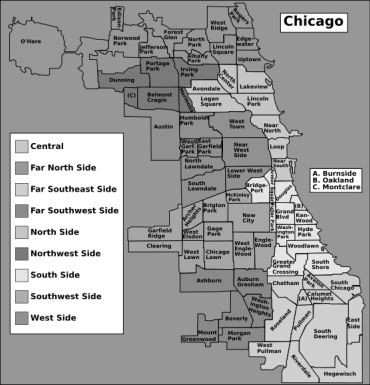 Courtesy http://thechicago77.com
Courtesy http://thechicago77.com Chicago is a city of neighborhoods, with 77 "named" communities and dozens more enclaves within those communities. And each has a branch of the Chicago Public Library to enrich the reading lives of its residents.
The names of the branches reflect the communities they serve: Albany Park, Beverly, Edgewater, Gage Park, Logan Square...
A little history...

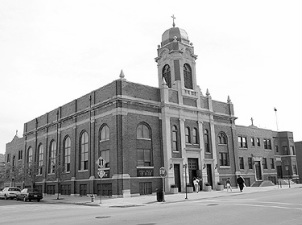 Our Lady of Guadalupe
Our Lady of Guadalupe While residents may have worshipped in their own way, in their own places, they all (or presumably a good portion) went to the public library, which was built in 1941. Here was another higher power... the power of information, the power of knowledge, the power of words to transport...
Neighborhoods change...
 Entrance to the mill
Entrance to the mill By 1980, African-Americans made up more than 50% of the population in South Chicago and 86% of the population in Calumet Heights. The neighborhoods were indelibly altered, but unfortunately still segregated, aided by the unscrupulous real estate practice called "blockbusting" which contributed to the phenomenon known as "white flight." Any 60's dreams of a integrated community of whites, blacks and Latinos living in harmony died quickly.
The South Chicago community was particularly impacted by the decline and ultimate death and closure of the South Works mill in 1992. It has never recovered, although any number of redevelopment schemes have been batted around, including a new airport, a plan to host the Summer Olympics and new enterprise zones. None managed to make it off the page of the dreamer's notebooks. Another plan is on the drawing board. Perhaps it will actually come to fruition, although whether it will actually benefit current residents is a big question mark.
Calumet Heights remains a middle class neighborhood of, for the most part, well-kept houses and groomed lawns and gardens, populated by city workers, police officers, firemen, teachers and other professionals.
But libraries -- and their missions -- endure...
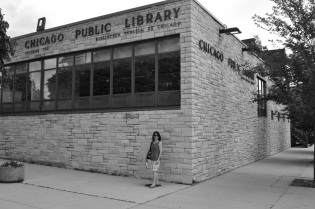 Dwarfed ...
Dwarfed ... 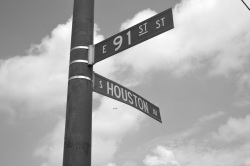 Real corner of happy and healthy?
Real corner of happy and healthy? Yes, there were printed signs that were jarringly disconcerting... signs that certainly did not exist in my youth and that I don't see in my cushy suburban library environment: signs posted on the security gates prohibiting gang activity and the wearing of hoodies, a sign on the circulation desk listing all manner of behaviors in which patrons may not engage:
Patrons may not:
EAT, SMOKE or SLEEP,
BATHE, SHAVE or WASH CLOTHES,
or
ENTER THE LIBRARY IF YOU HAVE NEGLECTED YOUR BODILY HYGIENE SO THAT IT GIVES OFFENCE TO AND CONSTITUTES A NUISANCE TO OTHER PATRONS...
or
BLOCK THE AISLES WITH PERSONAL POSSESSIONS...
or
ENGAGE IN ANY ILLEGAL ACTIVITY...
And yet... and yet... the friendly welcome of an older gentleman, a staff member who greeted me with a smile and a nod and the calm, soothing green interior of the library drew me in, the stacks beckoning, as they always have to girl who wants to be somewhere else...
Serendipity ... an unexpected discovery occurring by design...
All right, then, it was time to close my eyes...
I made my way over the children's area, noting that the security guard was eyeing me and my notebook with less-than-casual speculation. I didn't remember the big fish that hung on the wall. Sure enough, it was installed after the renovation.
The library contains other works of art, including this mosaic by Mirtes Zwierzynski:
"It's a quiet, calm place. Usually cool in the summer. Air must not be working today. I like to read the magazines. I can't afford to buy them. Here, they're free." She gestured to a tween-age boy focusing intently on a computer screen on the other side of the carrel. "And my son likes to use the computers.
And this from another patron, a gentleman seated at a table near one of the portable air conditioning units, immersed in a new crime novel, The Ways of the Dead by Neely Tucker: "Free books. A clean, quiet place to read them. It's close to where I stay. Short walk."
And then the librarian was bearing down on me, with a semi-nervous smile on her face and a hearty "How can I help you?" She seemed to find it hard to believe that this was my childhood haunt... "How long ago was that?" she asked incredulously. When I explained my mission -- to celebrate the wonders of libraries -- she relaxed a bit and when she realized I hadn't been in the library since the renovation, enlightened me to the addition of an elevator.
Taking photographs aroused a similar flurry of questions and admonishments... What organization are you affiliated with? No photographing of patrons... oh, you want to shoot the artwork? That's okay... but no patrons.
I got the sense that these library workers were not accustomed to the notion that someone who is not a regular patron, someone who is an outsider, a stranger, might come to the library to look for things to praise, to celebrate... is this a City of Chicago thing? Are they always looking over their shoulders, worried that the bosses are sending in spies to appraise their work habits and upkeep of the property?
They can certainly rest easy... I can recognize a haven when I see it... in the relaxed faces of their patrons, the ease of the shoulders, the lack of tension along the brow and the jaw, the focus they exhibit... and in the words they use to describe this special place... quiet, calm, clean... free.
A library should be what its patrons need it to be... and the South Chicago branch delivers.

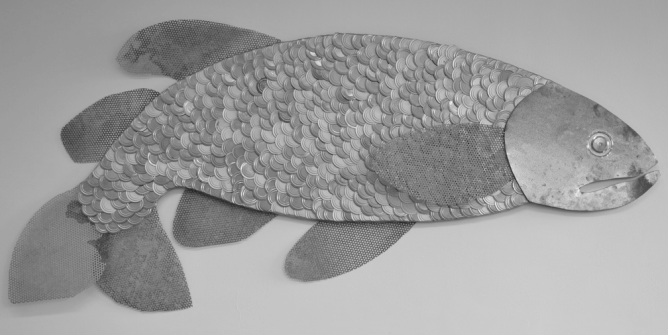

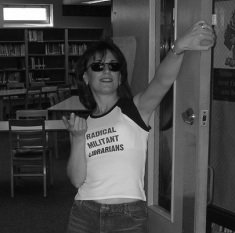
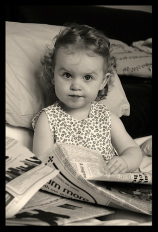
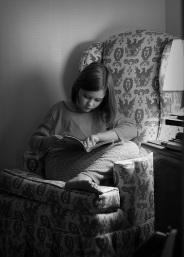
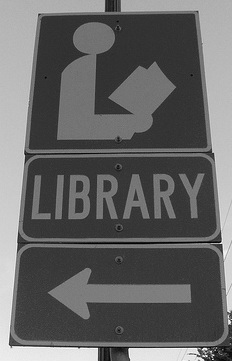
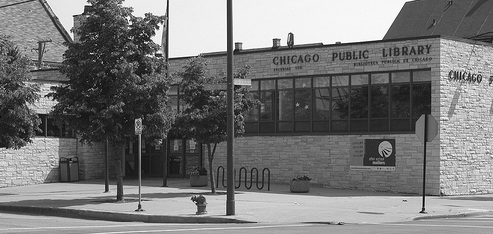
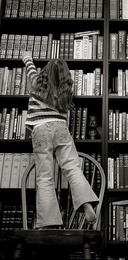
 RSS Feed
RSS Feed